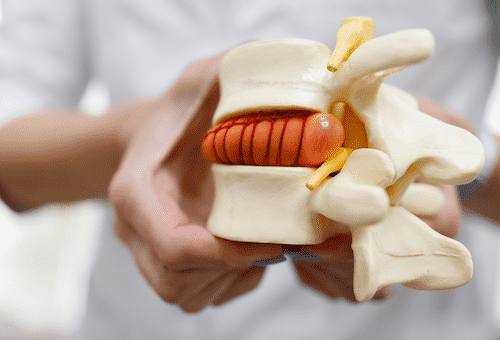Targeted Hip Pain Relief
Book NowWhat is Hip Pain?
The Hip joints are the ball and socket joints on each side of the pelvis, composed of several bones, ligaments, tendons, and muscles. All these structures must work together for the hip to maintain its structure, function, and mobility.
The hip is the primary mover in the area; however, it relies on the mobility of the pelvic joints and correct nerve communication from the lumbar spine to remain at its functional best.
The hips undergo considerable stress from repetitive movement patterns (walking), which can lead to restricted movement, and eventually pain. This pain can range in its nature, from a dull ache to a sharp & stinging as well as being able to come and go or be constant.

Poor function in the Hips and Pelvis can often create Muscular Pain in the Gluteal Muscles which can also often Refer to Pain in the Thighs.


What Causes Hip Pain?
Hip pain can arise from a variety of conditions ranging from arthritis, which causes inflammation and degeneration within the joint, to serious injuries such as fractures and pathology. However, most hip pain comes from overuse and repetitive stress issues which create imbalances and can also lead to conditions like sprains to the surrounding ligaments and muscles or more inflammatory irritations known as bursitis and tendinitis.
Many of the issues contributing to hip pain such as Sacroiliac Syndrome, Facet Dysfunction and Disc Injuries have been covered elsewhere, but one theme of all these is that their failure can cause muscle weakness and create functional instability in the pelvic and hip joints, in other words, although the hip muscles are the ones inflamed it is likely there is a cascade of reactions from other conditions feeding into a now complex pain pattern.
Treating the localised inflammation can give a short-term result, long-term results are only likely if you can identify the origin of the dysfunction and correct that.
What are the Typical Symptoms of Hip Pain?
The typical symptoms of hip pain can vary widely depending on the underlying cause. Common signs include discomfort in the groin or thigh, stiffness or reduced range of motion, and pain that worsens with activity. Some may experience pain that radiates to the knee or buttock, difficulty walking or bearing weight, and a feeling of the hip “giving way.” These symptoms can often affect daily activities and sleep quality, indicating the need for a thorough evaluation and appropriate management.
What is Pain in the Front of the Hip and Thigh?
Pain in the front of the hip and thigh is often associated with hip flexor issues or injuries. The hip flexors, particularly the iliopsoas muscle, can become strained or overused, leading to discomfort at the top of the thigh and often refer down the thigh muscles. Additionally, conditions such as femoroacetabular impingement (FAI) and labral tears can cause pain in the anterior region of the hip, these are where the bone and cartilage become damaged by improper movement patterns and begins to remodel, a bit like an early onset arthritis which can occur especially in patients who are very active/sporty early on in life.

Hip pain initially tends to be worse upon activity however a tell-tale sign of advancing arthritic hip problems is seen when pain is worse after a period of rest e.g., first thing in the morning, or getting out of a chair after a period seated.

What are the Symptoms of a Worn Hip?
A worn hip, typically resulting from osteoarthritis, can manifest several symptoms including persistent pain, stiffness, especially in the morning or after periods of inactivity, reduced range of motion, and a grinding or clicking sensation within the joint. The condition takes years to take hold, often beginning as simply stiff hips, and never really developing as pain until the condition is well progressed, where it may become increasingly difficult to perform everyday activities or weight bearing due to the increasing degrees of inflammation and bone deformation.
What are the Red Flags of Hip Pain?
Hip Pain Red flags that warrant immediate medical attention include severe pain that doesn’t improve with rest, signs of infection such as fever or warmth around the joint, sudden inability to move the hip or bear weight, and sudden swelling. These symptoms could indicate serious conditions like fractures, septic arthritis, or avascular necrosis.
What is the Best Hip Pain Treatment?
At The DISC Chiropractors, Surbiton our focus is always on addressing the root causes of your pain by correcting underlying dysfunction. For hip pain treatment this often includes correcting spinal and pelvic dysfunction. We employ a range of techniques tailored to your specific needs. Mobilisation techniques are used to gently increase the range of motion in your hip, easing stiffness and improving flexibility. Soft tissue work, including massage guns and myofascial release, helps to relieve muscle tension and enhance blood flow.
Additionally, we may utilise laser therapy, a non-invasive treatment that promotes tissue repair and reduces inflammation. Our holistic approach aims to restore your hip function and relieve pain, getting you back to your daily activities with ease.

Contact Us
If you would like to find out what we could do to help your Hip Pain, please click the icon below to book a thorough consultation to evaluate your case.
